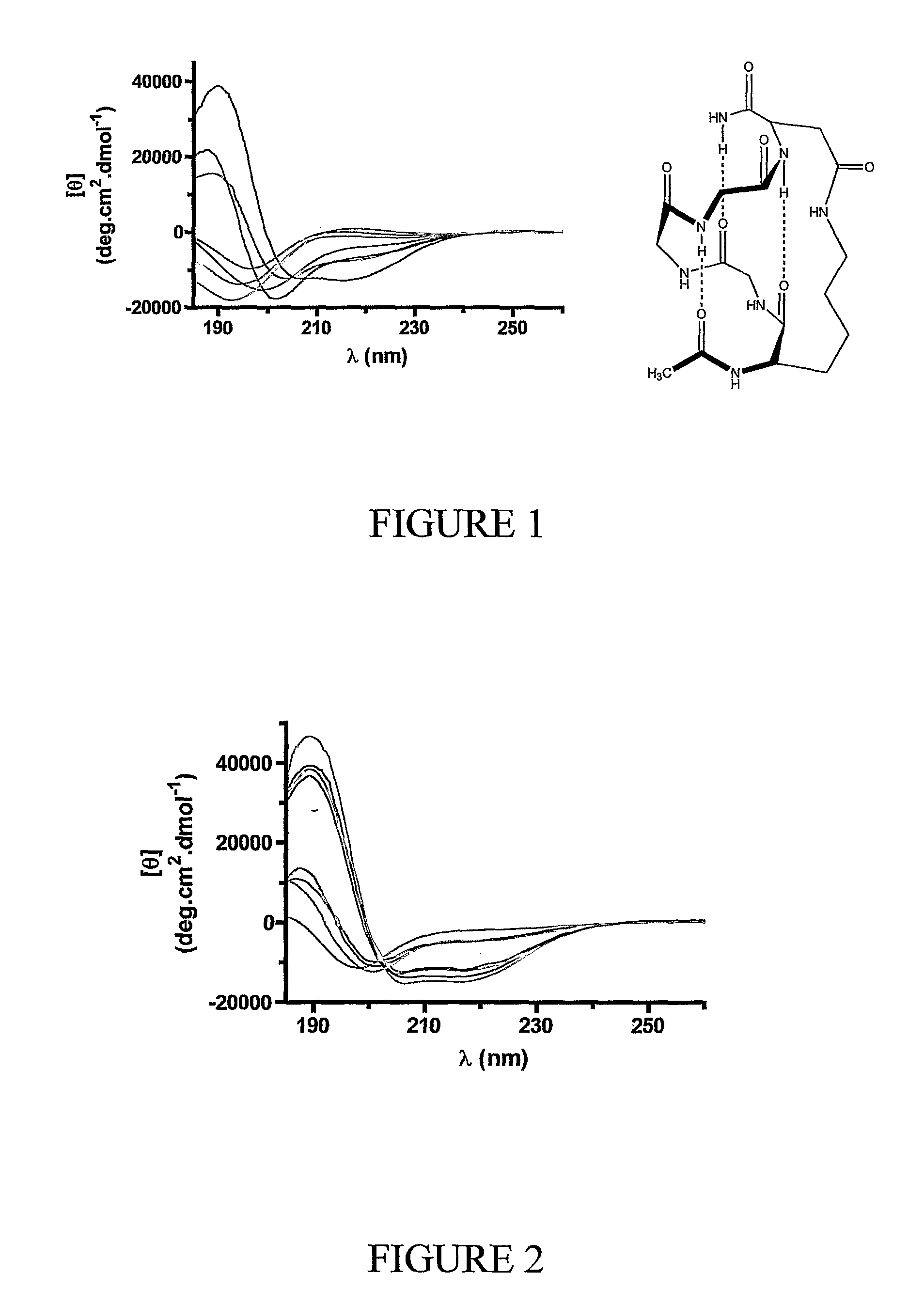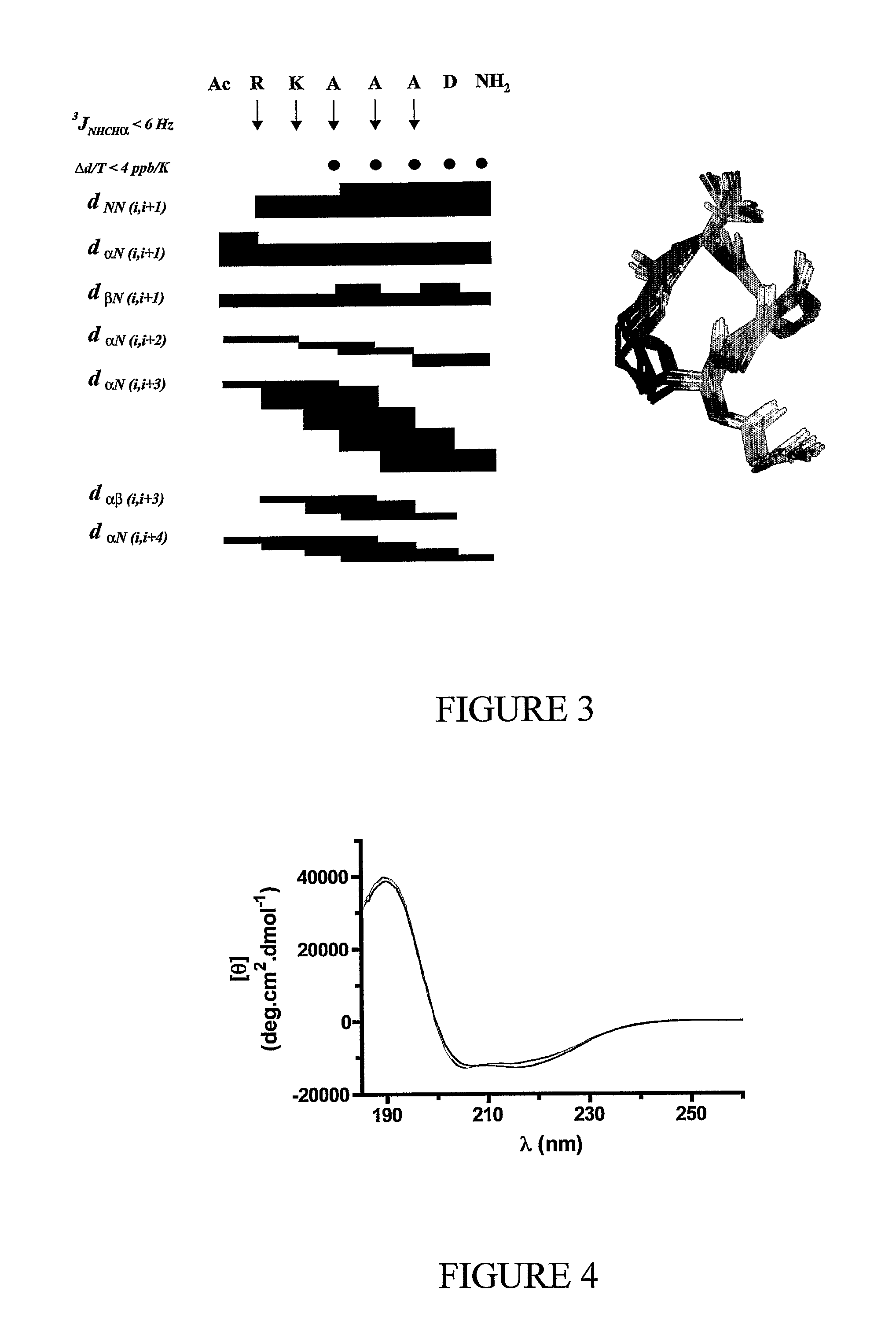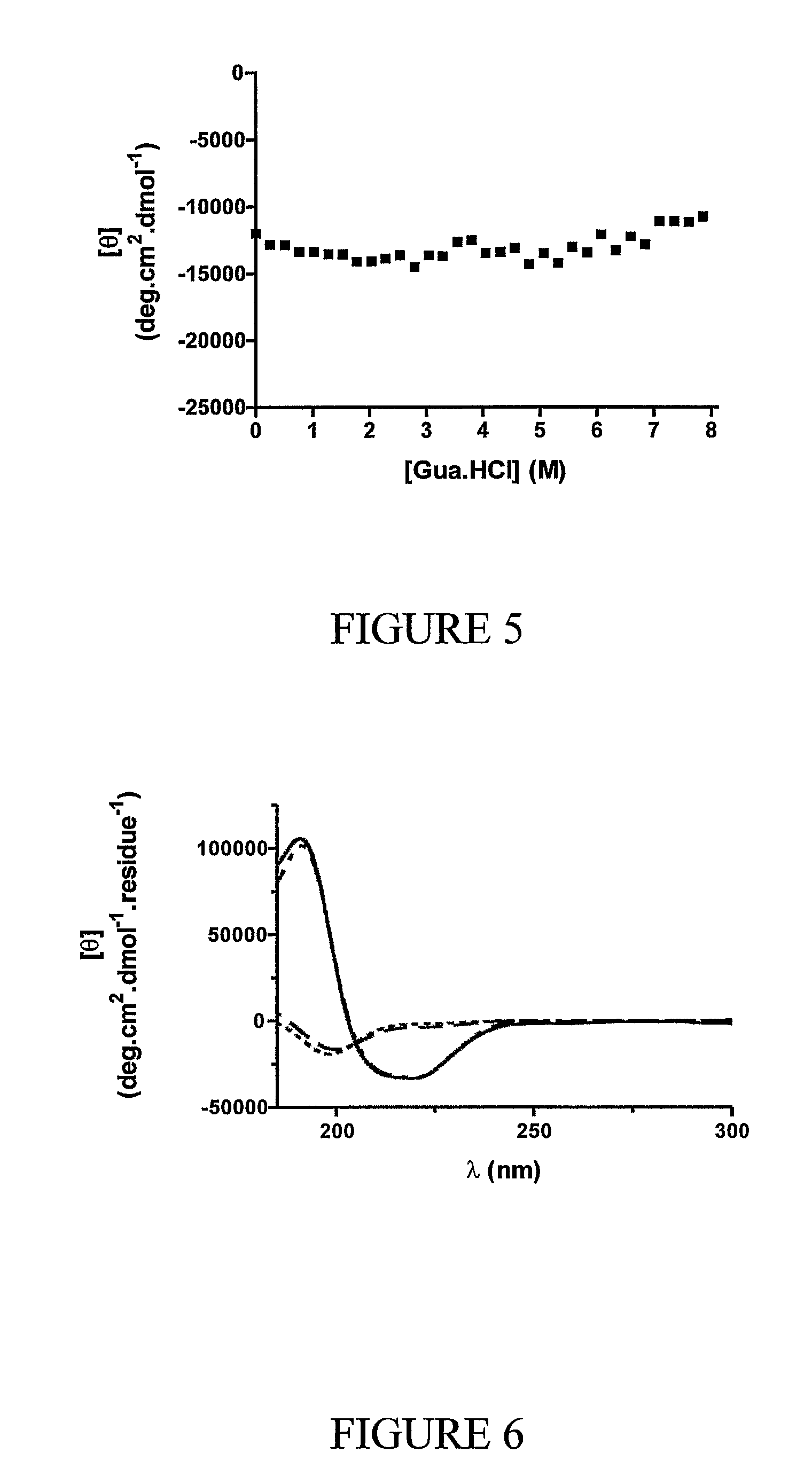Alpha helical mimics, their uses and methods for their production
a technology of alpha helical mimics and alpha helical peptides, applied in the field of short chain peptides, can solve the problems of limited general application of hexapeptide scaffolds as templates, limited success of attempts to stabilize short alpha helical peptides to date,
- Summary
- Abstract
- Description
- Claims
- Application Information
AI Technical Summary
Benefits of technology
Problems solved by technology
Method used
Image
Examples
example 1
Peptide Synthesis
Pentapeptides and Hexapeptides
[0236]Peptides represented by SEQ ID NO. 8 to SEQ ID NO: 31 were prepared on 0.25 mmol scale by manual stepwise solid phase peptide synthesis using HCTU / DIPEA activation for Fmoc chemistry on Rink Amide MBHA resin (substitution 0.78 mmol·g−1), or Tentagel S RAM resin (substitution 0.25 mmol·g−1), or Trityl chloride resin (substitution 1.0 mmol·g−1). Four equivalents of amino acid and eight equivalents of diisopropylethylamine (DIPEA) were employed in each coupling step (45 mins), except for Fmoc-Asp(OAllyl)-OH and Fmoc-Lys(Alloc)-OH where only 2 equivalents were used. Fmoc deprotections were achieved with 3×5 min treatments with excess 1:1 piperidine:DMF. Coupling yields were monitored by quantitative ninhydrin assay51 and double couplings were employed for yields below 99.6%. After the assembly was complete, the allyl ester of aspartic acid and allyl carbamate of lysine were removed by treating the peptide resin with Pd(PPh3)4 (0.1 eq)...
example 2
Cyclic Pentapeptides with Non-Peptidic Capping Groups
[0238]Synthesis of the peptide of formula (II) was achieved by standard Fmoc SPPS protocols using trityl chloride polystyrene resin. The peptide was capped with phenyl butanoic acid, cleaved from the resin using 1% TFA in dichloromethane (DCM) leaving side chain protecting groups intact. Isobutylamine was then coupled on using BOP, DIPEA, with CuCl2—an additive known to minimize racemisation of the C-terminal residue. Following this final deprotection was effected with 95% TFA, 2.5% TIPS, 2.5% H2O.
example 3
N-Terminal Cyclic Pentapeptide Building Block
[0239]NH2-(cyclo-1-5)-KARAD-NH2 (SEQ ID NO. 52) was prepared by manual stepwise solid phase peptide synthesis using HBTU / DIPEA activation for Fmoc chemistry107 on Rink Amide MBHA resin (substitution 0.78 mmol·g−1, 1.56 mmol, 2000 mg). Four equivalents of amino acid and eight equivalents of diisopropylethylamine (DIPEA) were employed in each coupling step (45 mins), except for Fmoc-Asp(OAllyl)-OH and Boc-Lys(Fmoc)-OH where only 2 equivalents were used. Fmoc deprotections were achieved with 3×5 min treatments with excess 1:1 piperidine:DMF. Coupling yields were monitored by quantitative ninhydrin assay108 and double couplings were employed for yields below 99.6%. After the assembly was complete, the allyl ester of aspartic acid was removed by treating the peptide resin with Pd(PPh3)4 (0.05 eq) and diethylamine (5 eq) in DCM, under argon and in the dark for 2 hrs. After which the peptide was washed with DCM, DMF and 0.5% diethyldithiocarbama...
PUM
| Property | Measurement | Unit |
|---|---|---|
| temperature | aaaaa | aaaaa |
| temperatures | aaaaa | aaaaa |
| reaction time | aaaaa | aaaaa |
Abstract
Description
Claims
Application Information
 Login to View More
Login to View More - R&D
- Intellectual Property
- Life Sciences
- Materials
- Tech Scout
- Unparalleled Data Quality
- Higher Quality Content
- 60% Fewer Hallucinations
Browse by: Latest US Patents, China's latest patents, Technical Efficacy Thesaurus, Application Domain, Technology Topic, Popular Technical Reports.
© 2025 PatSnap. All rights reserved.Legal|Privacy policy|Modern Slavery Act Transparency Statement|Sitemap|About US| Contact US: help@patsnap.com



